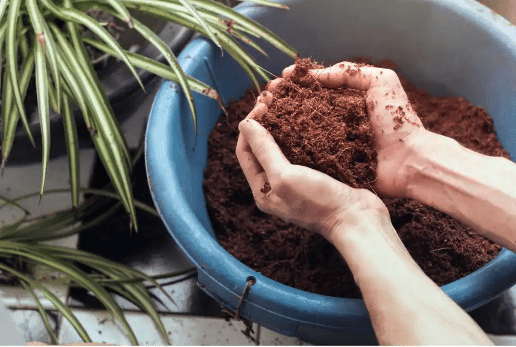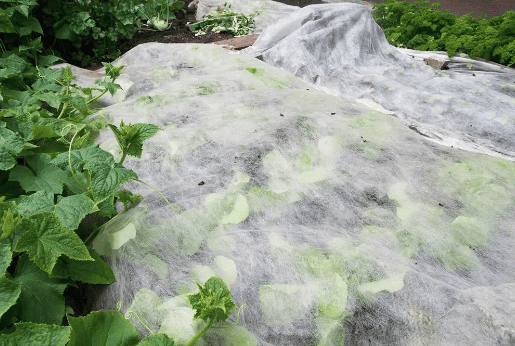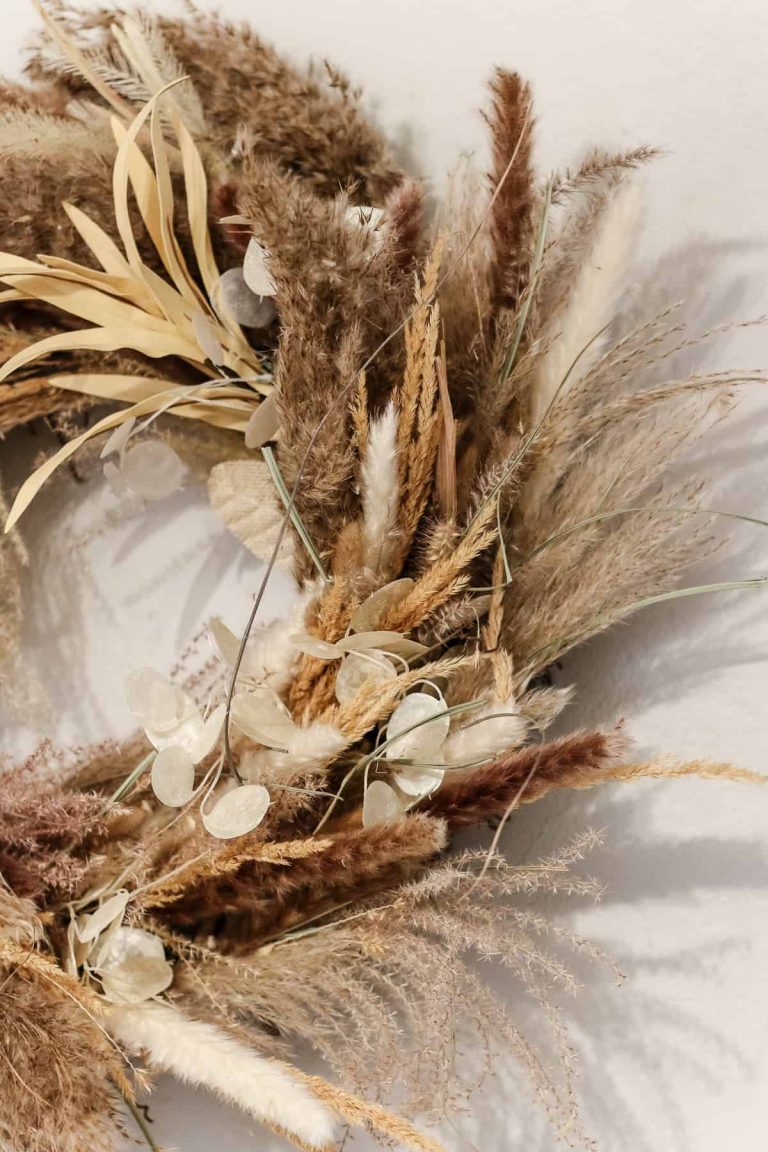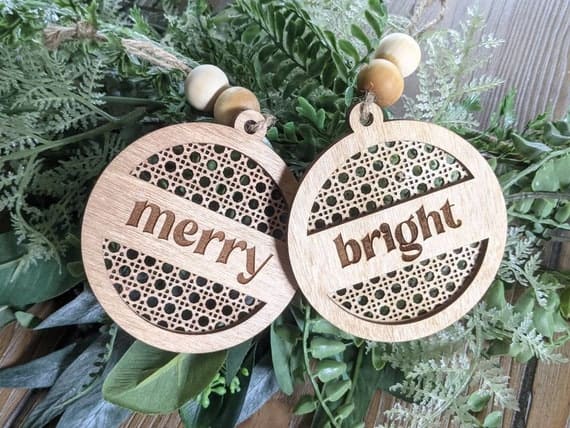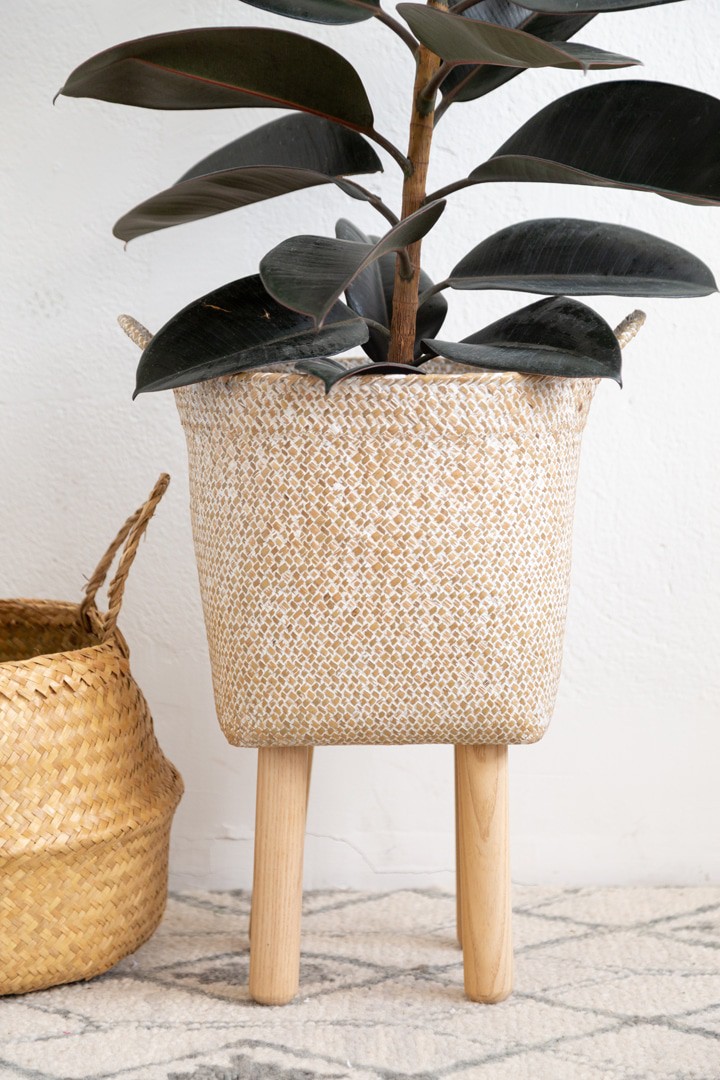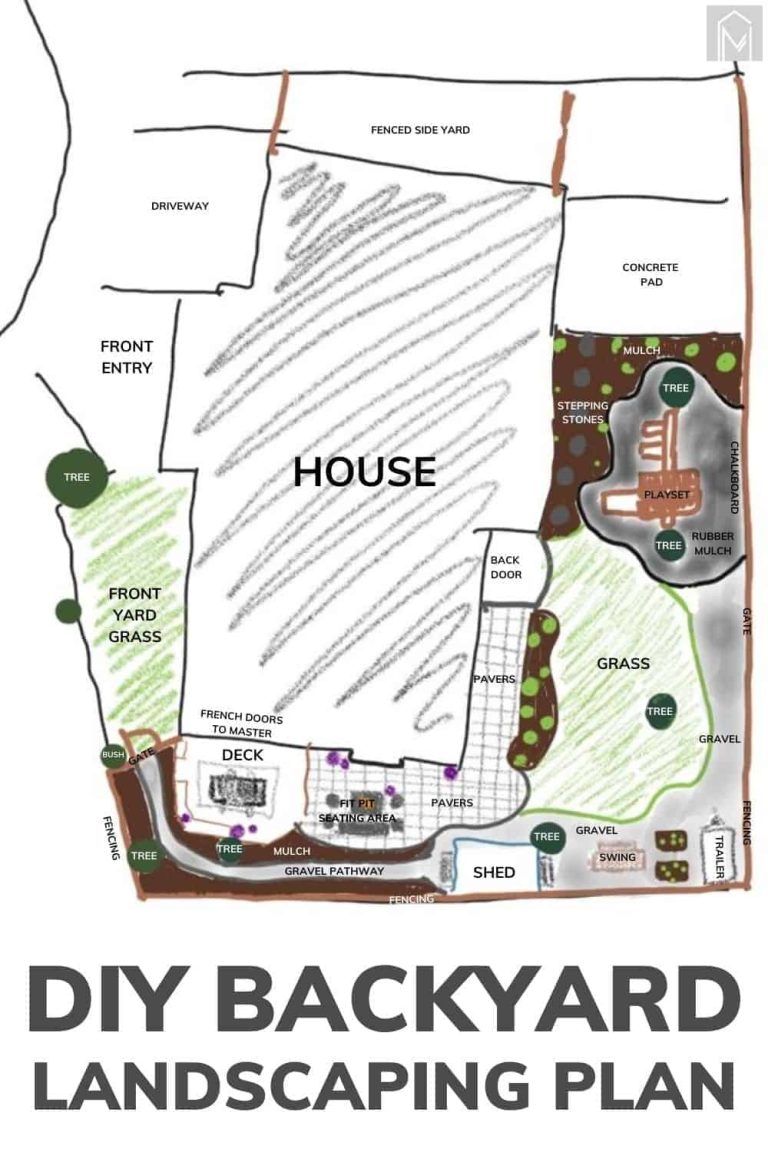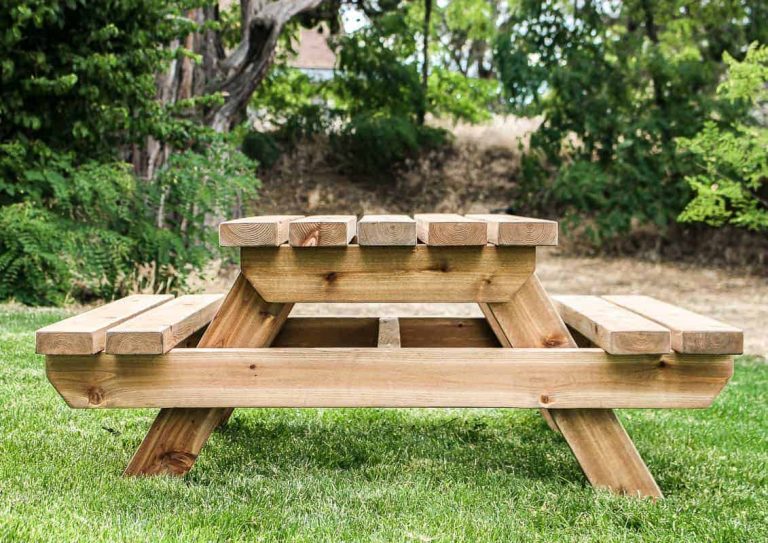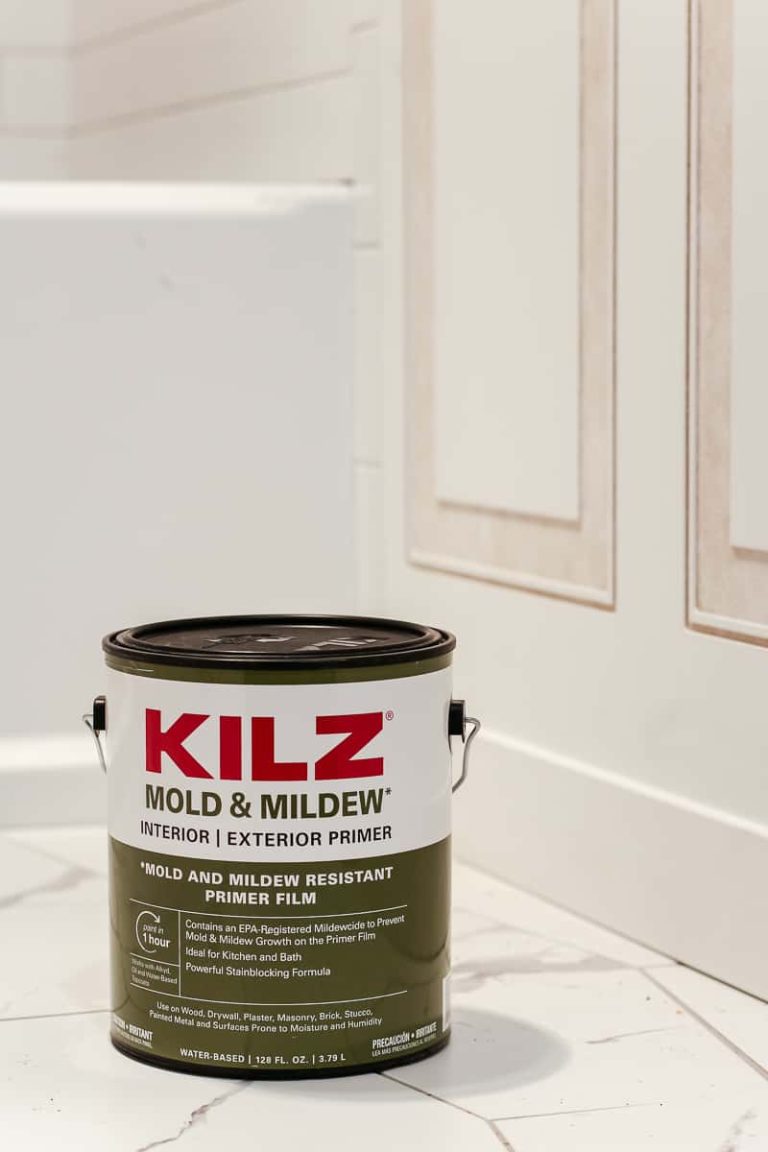11 Different Types of Landscaping Mulch
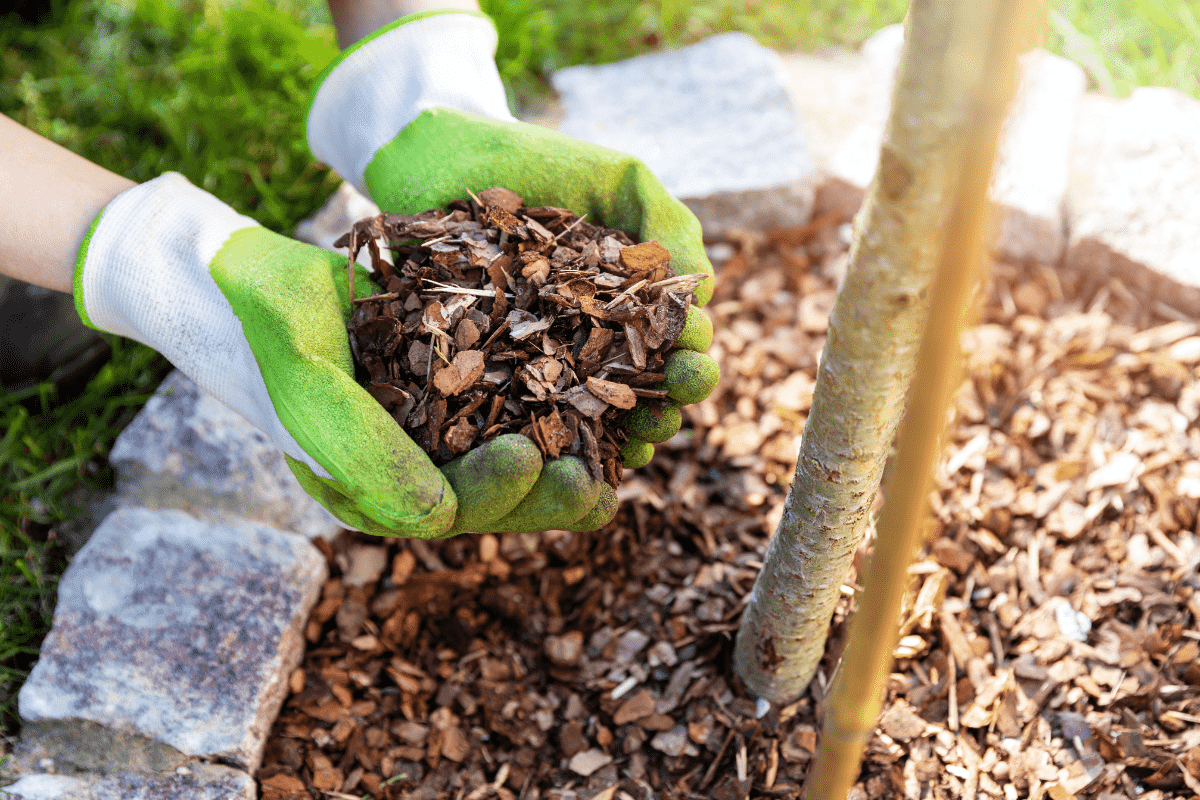
There are so many different types of mulch, it can definitely feel overwhelming when it comes time to choose one. Let's explore 11 different types of mulch and learn how to choose the best one for you!
Spring is almost here, which means that it is time to start thinking about getting your landscaping beds and garden ready for the growing season. Spring is also usually the time that you replenish mulch, so here’s a guide for you to learn more about 11 types of landscaping mulch.
Table of Contents
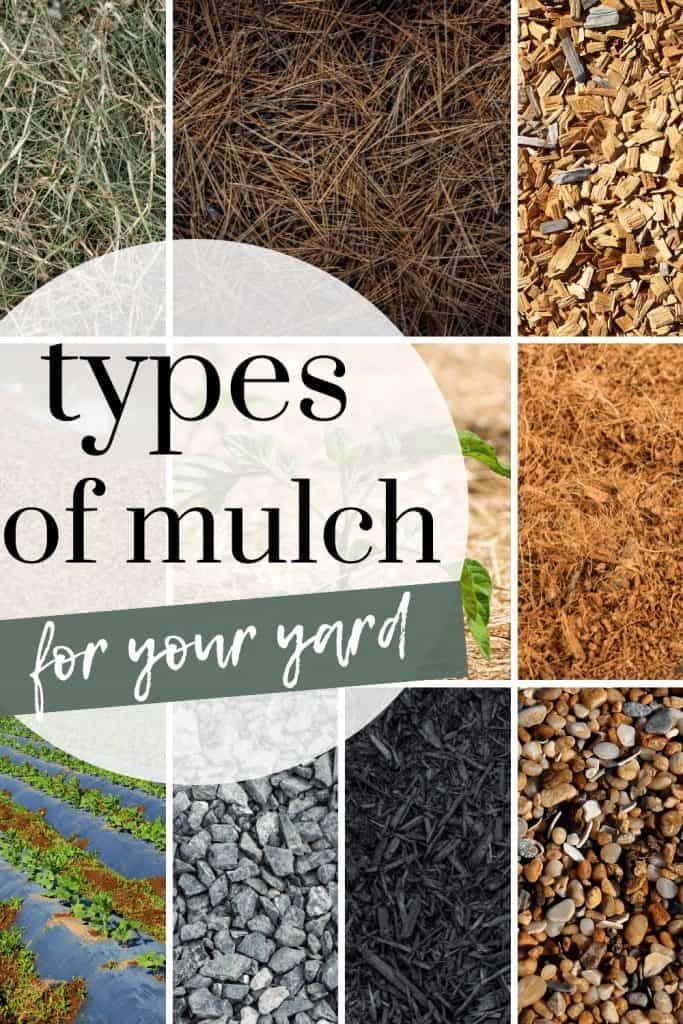
This landscaping mulch guide contains affiliate links, but nothing that I wouldn’t recommend wholeheartedly. Read my full disclosure here.
What is landscaping mulch?
Mulch covers the surface area of soil and ‘ to mulch’ simply means a layer of material placed over the soil to cover the root area of plants.
Mulch for your garden and flower beds can be made with either organic or inorganic materials (aka man-made).
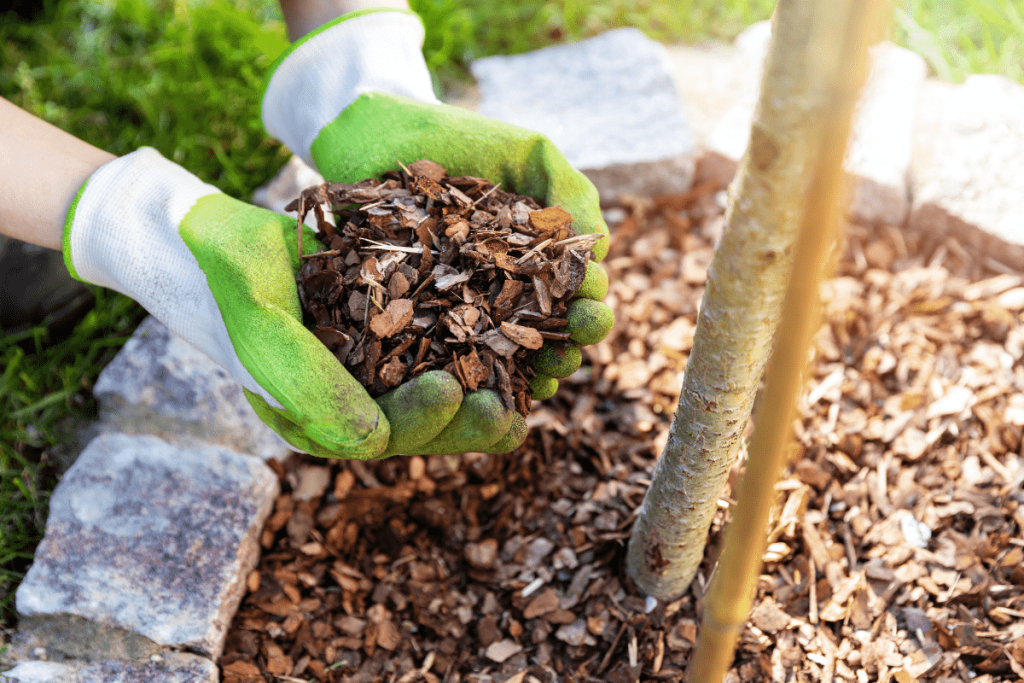
Benefits of mulch in your yard
- Helps conserve water
- Prevents the surface from drying out too quickly
- Keeps roots warm in winter and cool in summer
- Some kinds of mulch also provide limited food for plants
- Can also help increase mineral levels near the surface, which can dissolve in soil water and be taken in by plant roots
- Weed suppression by excluding light, so the weed seeds can’t germinate
- Encourages earthworms, which are great for your soil
- Prevents disease, but why this is so is not totally clear
- Prevents soil erosion and soil compaction from heavy rains
Things to watch out for when mulching
- Keep an eye out for signs of pests on your plants and in your soil. A mulched area can be a nice hiding spot for pests!
- Don’t put down too much mulch, which will bury, suffocate, or overheat your plants.
- Don’t apply mulch too early in the Spring season, which will prevent the soil from warming up.
- Don’t put the mulch right up against the base of your plant, woody plants, and trees. Give them some breathing room.
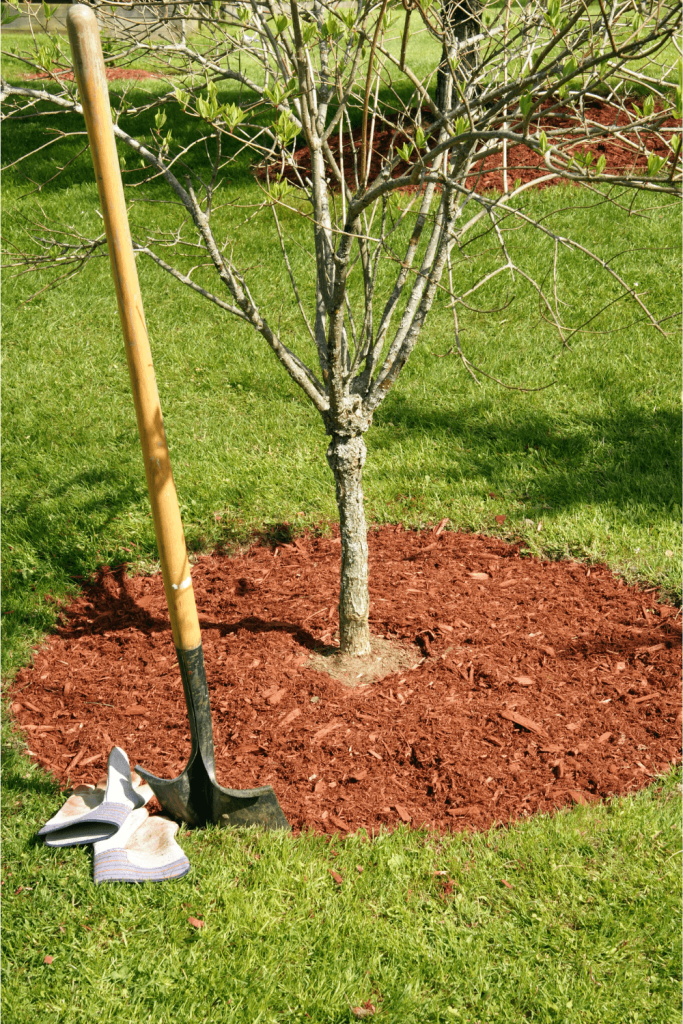
11 Different Types of Mulch
A range of materials is available depending on whether you want to use them purely to protect plants or if you want to really use them as a major part of your landscape design.
A mulch can be inorganic or organic and both types need to allow water to drain freely, stay in place in wind and rain, and be long-lasting.
Organic mulches
The word “organic” here means that these mulch options are made entirely with plant-based or animal-based products. The mulches made with organic matter are generally thought of as more eco-friendly.
1) Bark and wood chips
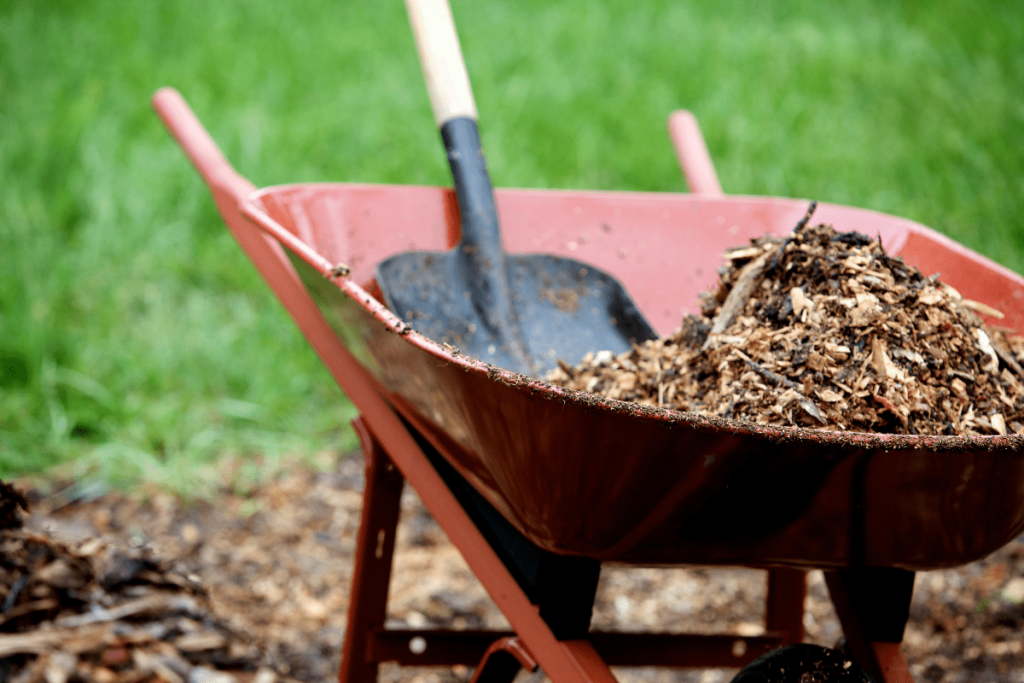
Bark and wood chips are perennial favorites as mulch. This is definitely, by and large, the most popular type of mulch. If you take a quick trip to the home and garden store (like The Home Depot) to buy mulch, you’ll probably see mostly wood-based mulch. But is it the best mulch?
Coarse bark is a popular choice because it discourages weeds, but any that happens to grow can be easily seen and removed.
Wood chip mulch is available in a range of colors according to the wood used or the dye applied to the wood. Often are sourced from soft wood like pine.
Using bark chippings are your mulch does little to improve the nutritional elements of the soil, but mostly is used for weed suppression and moisture retention.
2) Grass clippings
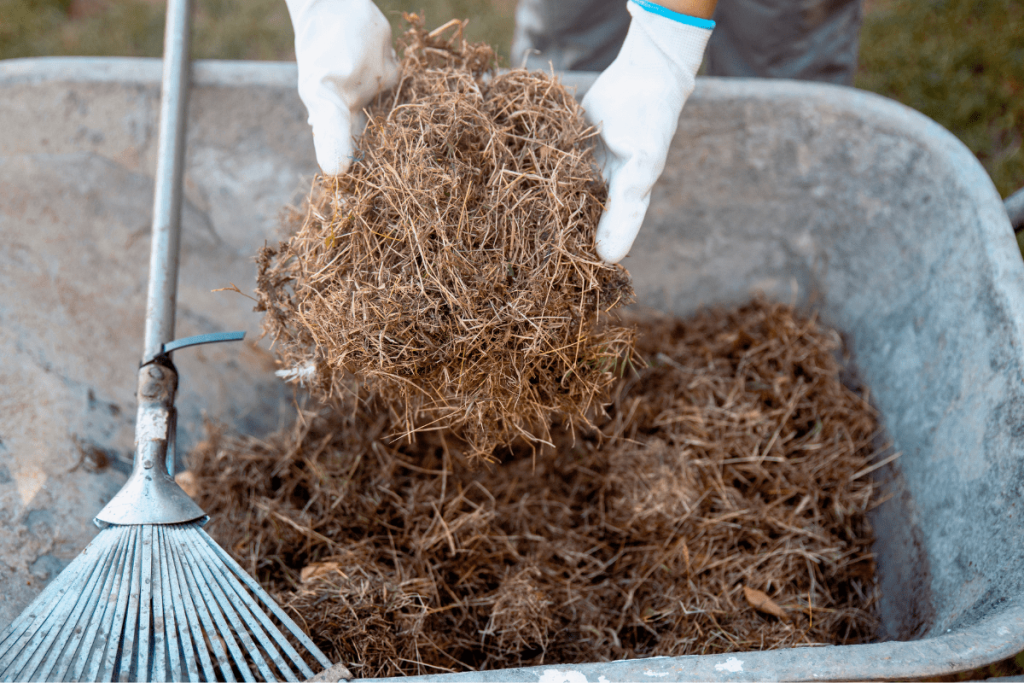
Grass clippings are another good mulch option, but it has a tendency of getting compacted down which will not be good for drainage and airflow.
It is something that most people can make themselves if they have a lawn to mow. Just take the clippings from your lawn mower and spread them out to dry out before applying them as mulch.
3) Pine needles
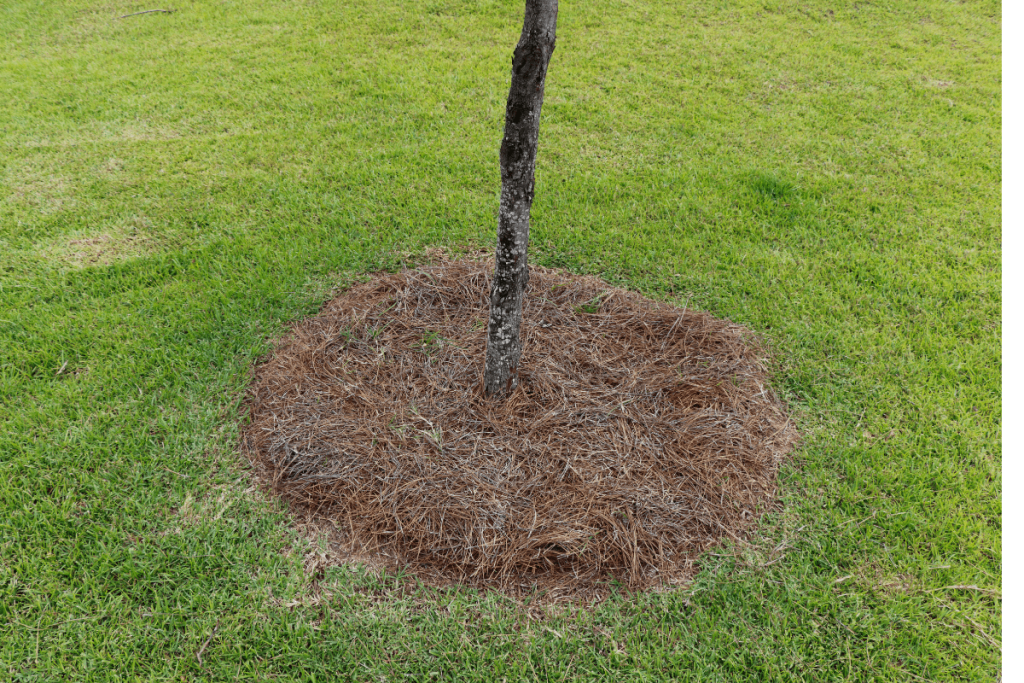
Pine needles are a good weed barrier and let water drain through very easily. They are also readily available in your backyard if you have any pine trees. Rake them up and use them as free mulch!
But if you do need to purchase pine needle mulch, it is much cheaper than traditional wood mulch.
4) Straw mulch
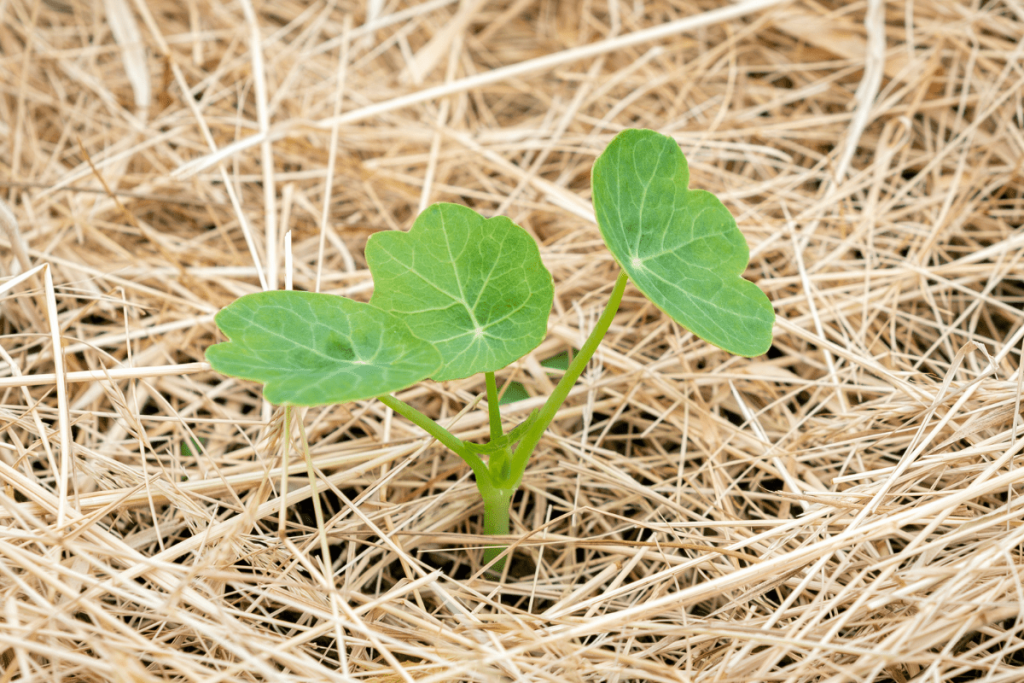
Straw mulch is a great option because it does a great job of keeping the soil moist, but it tends to break down pretty quickly so you’ll need to replenish it frequently. It’s not necessarily “pretty” so it makes a good mulch for your garden rather than your flower beds.
5) Seaweed
Seaweed is one of the oldest mulching materials. It contains many plant foods and refined seaweed is available in garden centers. It is a good source of nitrogen and potassium. Because it is salty from the ocean water, slugs will naturally be repelled, so that is a plus.
Seaweed decomposes quickly and it is not terribly good to look at, so it is generally shredded when sold as landscaping mulch.
If you live near the ocean, you can simply collect it yourself! However, if you don’t live near the coast you’re unlikely to find it sold readily in your area.
6) Spent hops
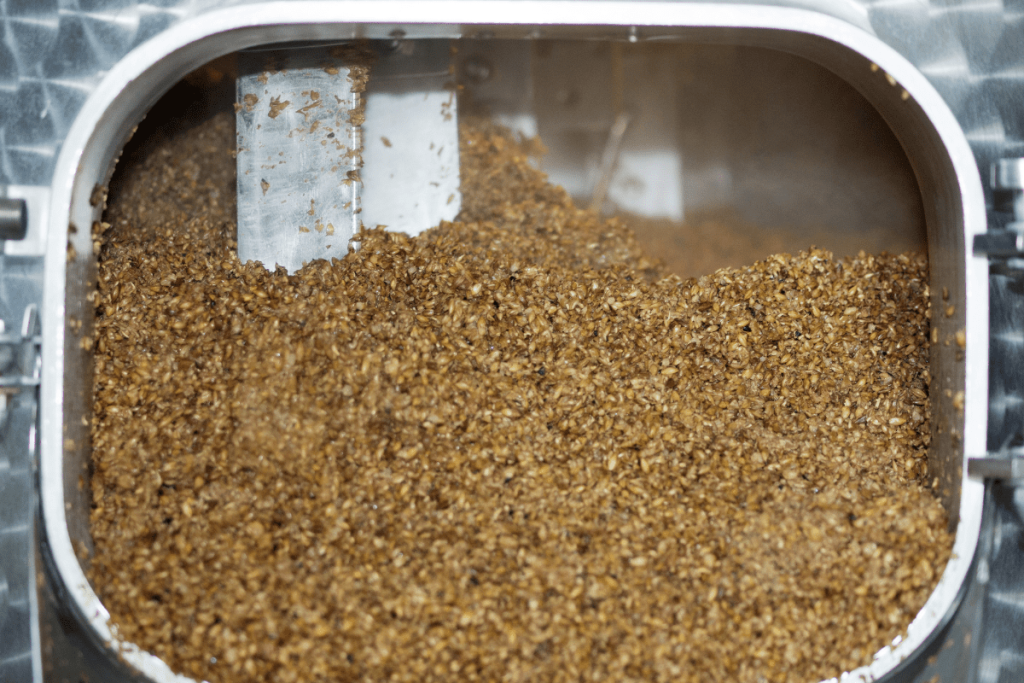
Spent hops, which are the waste product of hops after brewing beer, are another creative type of landscaping mulch.
They have relatively low nutrient levels, but they add bulk to the soil’s top layers. They also discourage weeds.
However, they can be hard to find unless you have a connection with a local brewery or you brew beer yourself.
7) Coconut coir
Coconut coir makes a decent mulch and can also be used as a potting mix. It looks good although it can become mushy over time. Coir offers an even texture and can be used over large areas.
Coconut coir mulch is generally sold as compressed bricks that need to be soaked first before spreading out over your garden beds.
Inorganic mulch
Inorganic mulches are made using synthetic or “man-made” materials. Mulch made with inorganic materials offers more aesthetically pleasing choices, although they offer little in the way of nutrition to the soil.
8) Floating mulch or fleece
Floating mulch or fleece can be laid over the soil to reduce weeds and offer frost protection to a few degrees. As plants grow the fleece rises up with them.
They can also be used to warm the soil up before planting. It can be hard to irrigate unless the floating mulch is perforated and add no benefits to the soil nutritionally.
9) Polythene sheets
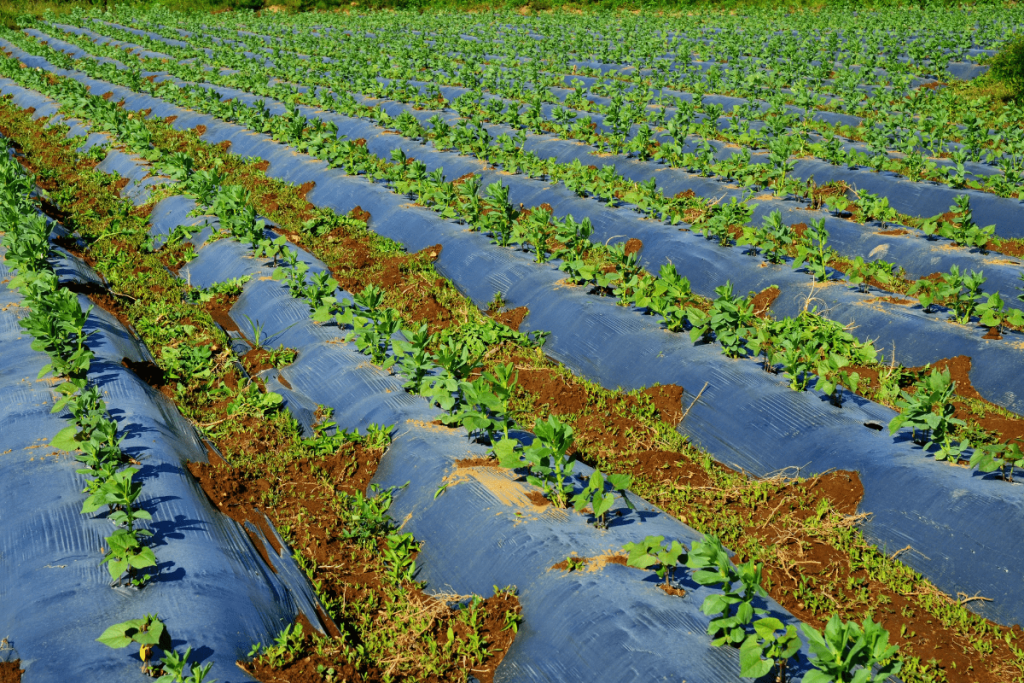
Some growers use these with holes punched in at regular intervals for planting crops, like potatoes and tomatoes. They reduce weeding in commercial operations and make harvesting easier too.
But when it comes to homeowners, they will typically use this or some type of landscaping fabric as an additional layer underneath mulch to help control weeds.
10) Gravel and stones
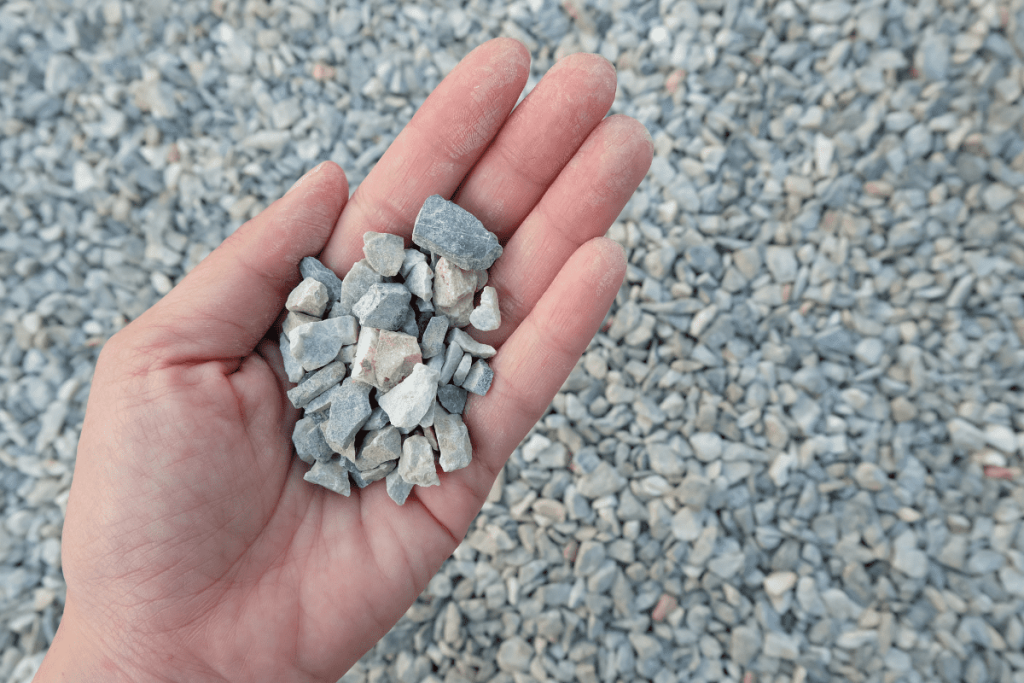
Gravel and stones can be effective and decorative mulch but they can migrate over time, which is annoying and can be expensive. It is available in different colors to set off alpines for example and improves drainage in the surface layers.
Small plants can be protected from weeds and competition by having a small area of gravel mulch around them. Stones transmit the sun’s heat to soil readily and warm down slowly so they can be a good mulch for plants needing warmth.
The types of stone mulch available will depend a lot on your region. There are several different types of stone mulches that you can use including:
- crushed stone
- pea gravel
- lava rock
- river rock
- decomposed granite
11) Rubber mulch
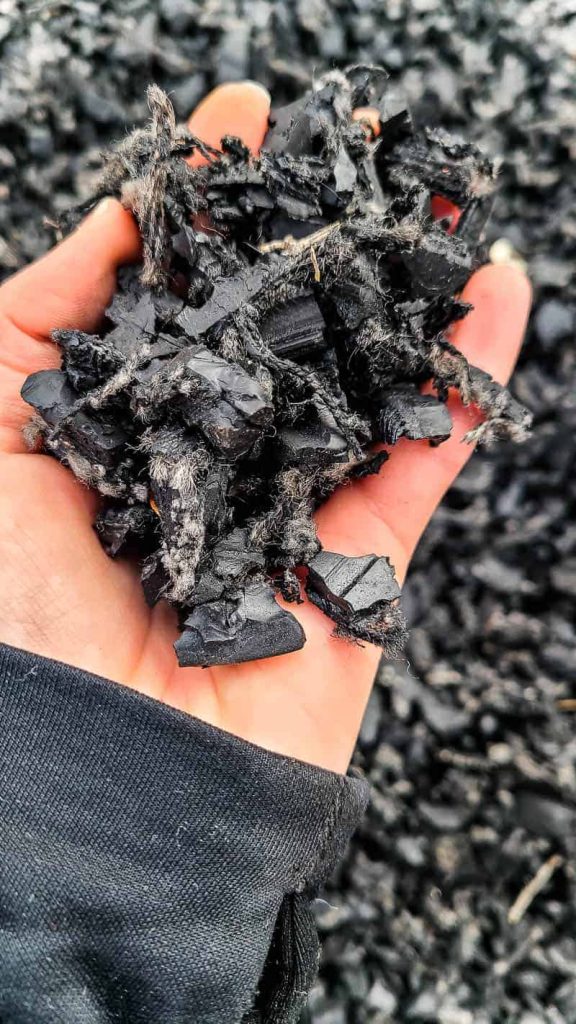
Rubber mulch is a great option as a mulch, especially for your play area. It’s a good option if you want black mulch because tires are black so it doesn’t require added dye. It is made from recycled tires, so it is good for the environment!
It is super long-lasting but will require a bigger investment upfront than other types of mulch. We have an entire article all about rubber mulch you can check out to learn more!
Landscaping mulch FAQs
When should you apply mulch?
Mulches should be used from mid-spring to late spring and onwards. Keep in mind that you don’t want to apply it too early in the spring because it will slow down the warming up of the soil that happens during Spring.
You’ll want to another layer of much applied in autumn during your annual fall yard clean-up to protect plants over winter.
Should you put down new mulch every year?
You only need to apply new mulch when it is needed. However, typically over the course of the year, the mulch will break down so that’s why most people choose to replenish it once or twice a year.
Should you remove old mulch before mulching?
No need to remove old mulch before adding a new layer of mulch. Mulch will break down over time if you just let it do its thing. But it does help to loosen up the old mulch first with a rake to make sure that air can still move and water can drain through.
How deep should mulch be?
1 to 2 inches around annual plants and in your vegetable gardens is enough. 2 inches around perennial plants and 3 inches in other areas of bare soil to prevent weeds.
How much mulch do I need?
- Figuring out how much mulch to buy at the store for your landscape beds can be overwhelming.
- Start by figuring out the square footage of your area by multiplying the length x the width (in feet).
- If you are filling multiple landscape beds, find the square footage of each and add them together.
- Then take the total square footage and multiply that by how thick you will apply it in inches.
- Then to find the cubic yards, divide the total square footage by 324. Cubic yards are what you will need if you’re ordering a bunch of mulch from a landscaping company.
If you are buying bagged mulch from the home improvement store, it’s a little more confusing! You can simplify the process by using this easy mulch calculator.
Do you put anything under mulch or does it go straight onto the soil?
You don’t have to put anything underneath your mulch, but adding a layer of plastic or landscaping fabric makes a HUGE difference in weed control.
We always add some type of landscape fabric under gravel, rubber mulch, or any areas where we don’t plan on putting any plants. Then you just put the mulch right on top of the fabric.
You can also intentionally cut holes in the fabric where you put plants.
There are so many different types of landscaping mulch to choose from, so we hope this guide was helpful for you to narrow down your options and choose what is best for you and your yard!
Which landscaping mulch do you usually use?
Let us know in the comments below!

